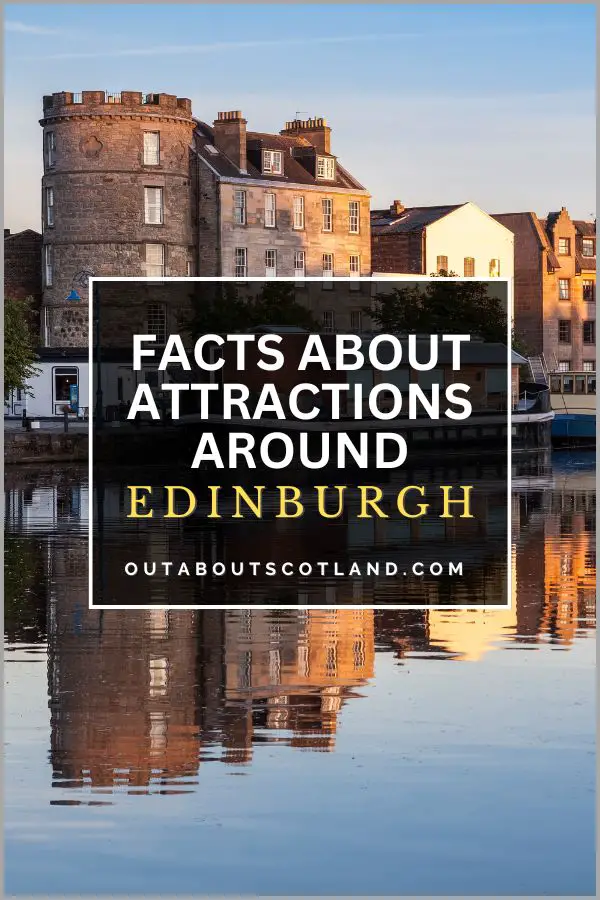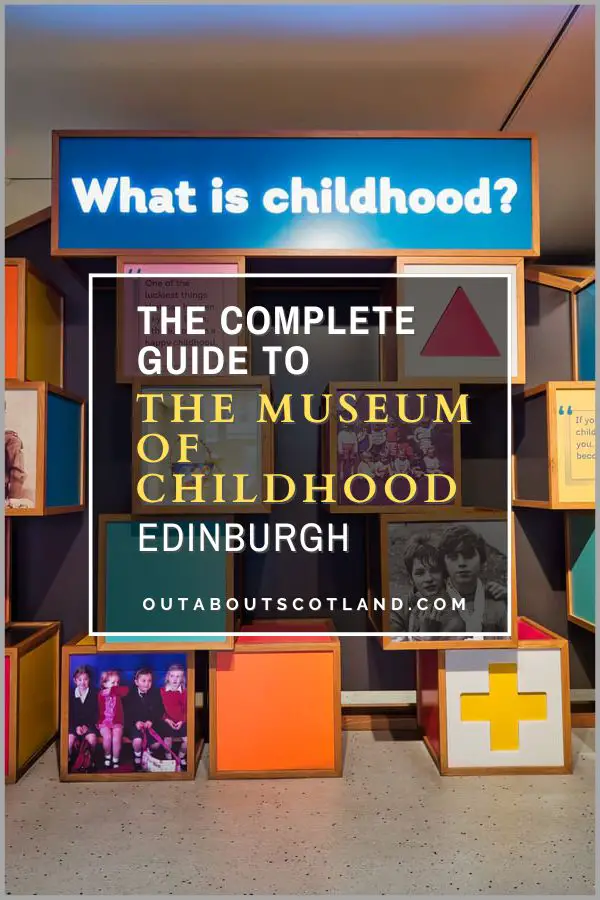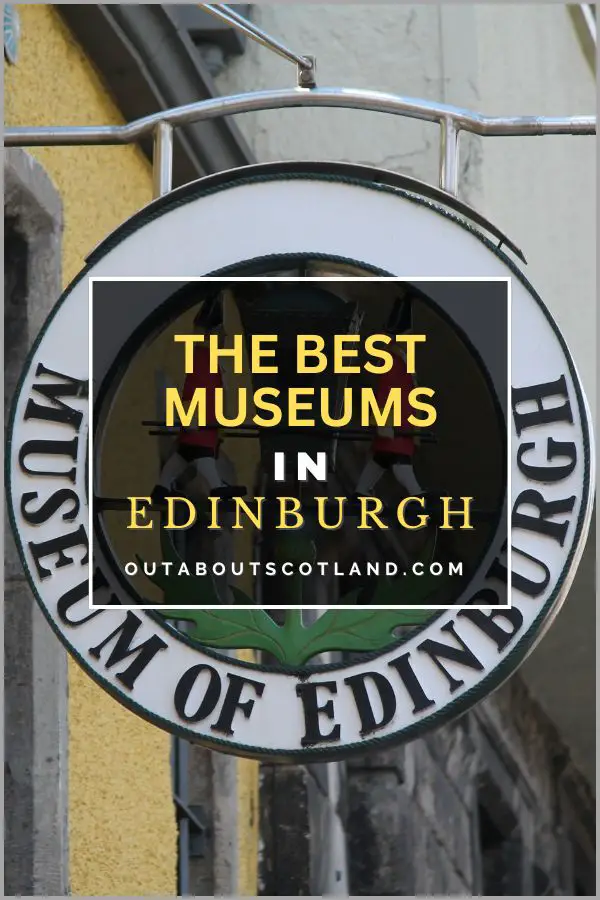The city of Edinburgh is one of the top tourist destinations in Britain and is second only to London for the number of people that visit it each year. That’s perfectly understandable when you consider the number of attractions that can be found in all corners of Auld Reekie, from the Royal Botanic Gardens and the Royal Yacht Britannia to Holyrood Park and the National Gallery of Modern Art.
As wonderful as those attractions are, they’re a little further away from the city centre than many tourists have time for, especially those sightseers who only have a day or two before zooming off to their next adventures in the Highlands, Glasgow, or Skye.
With that thought in mind, the following list features places to visit in Edinburgh that are within a short walking distance of the city centre, meaning they can all be visited over a couple of days and you won’t have to worry about using public transport to get to them.
Edinburgh Castle
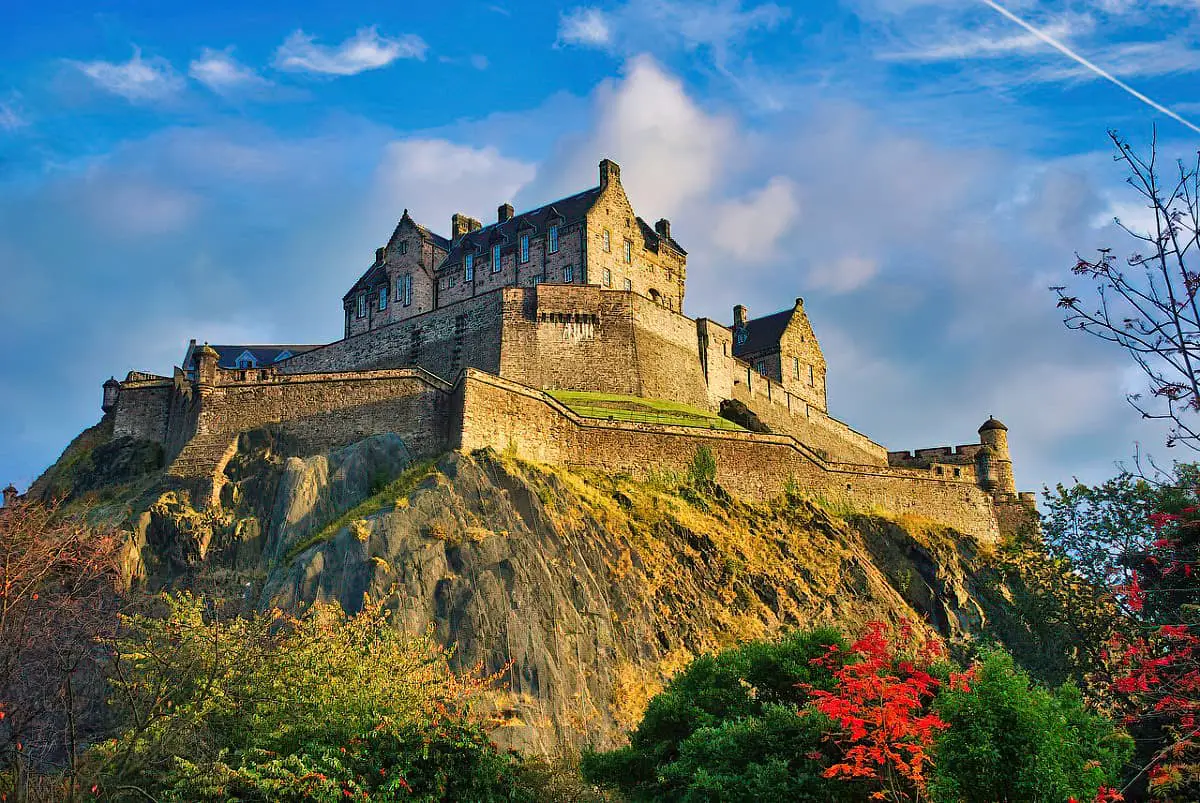
Out About Scotland Guide: Edinburgh Castle
Nestled on top of Castle Rock at the upper end of The Royal Mile, the majestic Edinburgh Castle beckons travellers from near and far to experience its rich history and unparalleled city-wide views.
This is Scotland’s most-visited tourist attraction, welcoming over 2 million visitors each year to marvel at its grandeur and explore its many treasures including the Honours of Scotland (the nation’s crown jewels), the Argyll Battery (home of the One o’clock Gun), and St. Margaret’s Chapel – the oldest building in the entire city.
It really is a true embodiment of all that’s great about Scotland’s best historic attractions.
As you stroll through the castle’s imposing buildings and explore its museums you’ll soon find yourself transported into the past thanks to a vast collection of fascinating artefacts that depict Scotland’s rich history. There are many highlights but three must-sees are the Royal Palace, the Scottish National War Memorial, and the Great Hall.
In short, Edinburgh Castle is a must-see destination for any traveller looking for things to do in Edinburgh city centre. It’s big enough to spend pretty much the entire day there, it has attractions that will be of interest to adults and children alike, and its location means it’s supremely easy to find.
Holyrood Palace
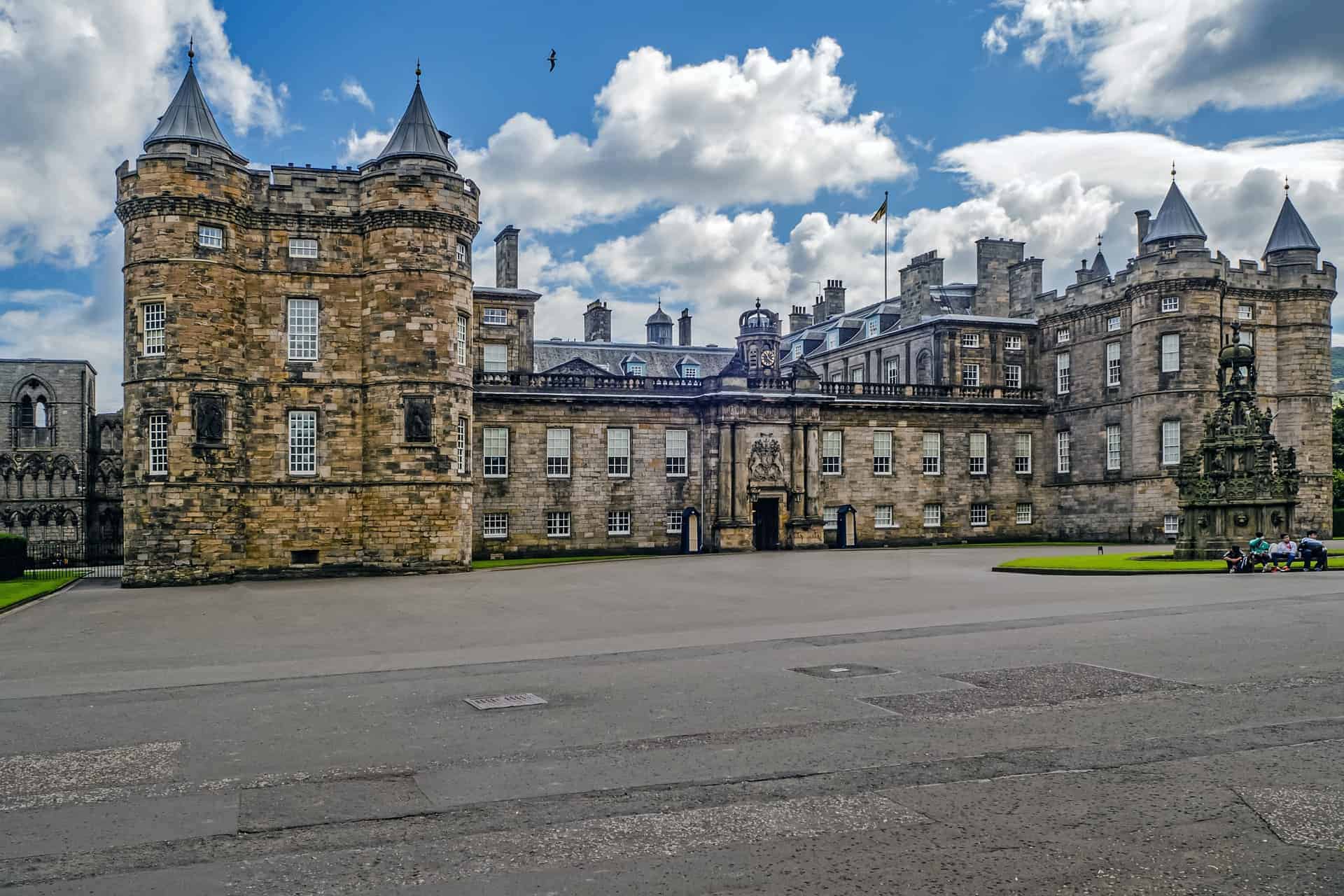
Out About Scotland Guide: Holyrood Palace
The end of Edinburgh’s regal thoroughfare, The Royal Mile, is the location of the beautiful Palace of Holyroodhouse, the official residence of the British monarchy in Scotland. A bastion of history dating back to the 12th century, the palace continues to play host to state occasions to this day and is also one of the most-visited Edinburgh attractions.
Holyrood Palace is open to visitors for self-guided tours, which are a must-do for anyone interested in royalty or history, but it has to be mentioned that tickets are a wee bit on the pricey side. That being said, joint tickets for Edinburgh Castle, the Royal Yacht Britannia, and the Palace of Holyroodhouse (links to Get Your Guide) are quite reasonable.
A journey through the interior rooms of the palace takes visitors on a tour through time, showcasing the 17th-century King’s apartments, the Great Gallery, and the 16th-century apartments where Mary Queen of Scots once resided.
Other highlights include the royal dining room, bed chambers, and various drawing rooms. While exploring the palatial rooms be sure to take a peek at the collection of cutlery laid out on the table in the main dining room – the sheer quantity of silver tableware is astounding.
In addition to the official state apartments, throne room, and great gallery, visitors can also explore the ruins of Holyrood Abbey and the palace’s picturesque gardens. Plus, the palace boasts an excellent café, a gift shop, and an exhibition of master paintings in the Queen’s Gallery.
St. Giles Cathedral
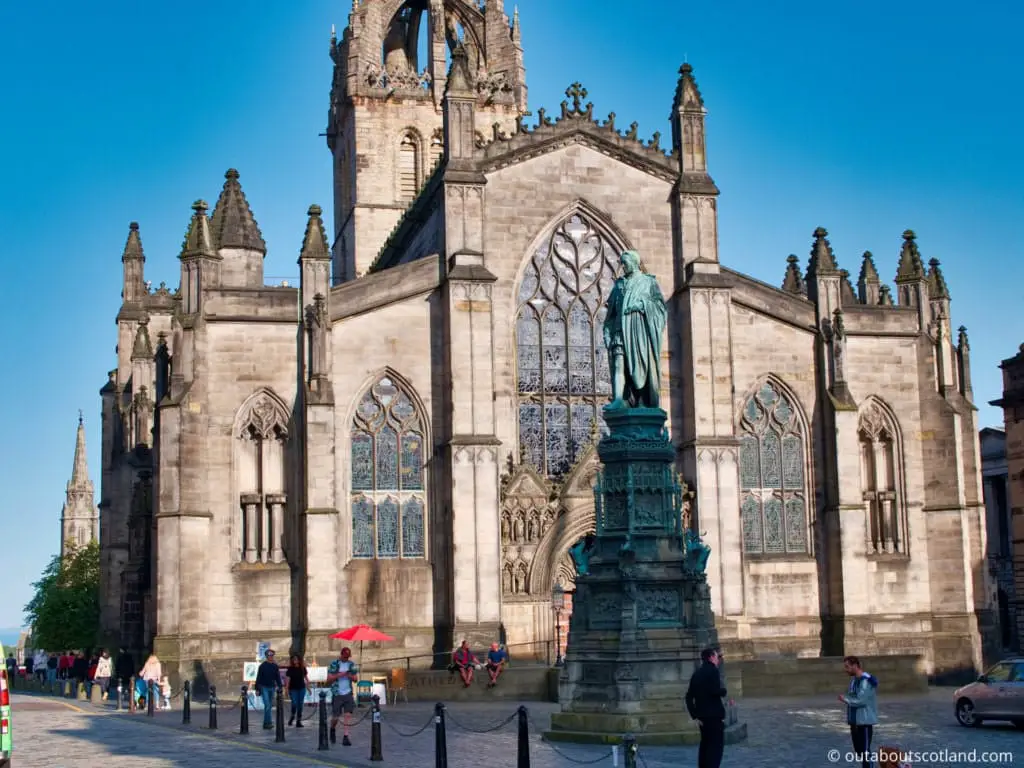
St. Giles Cathedral: St. Giles Cathedral
You can’t help but be in awe of St. Giles Cathedral’s grandeur as it towers over the Royal Mile. A true icon of the city, the cathedral easily stands alongside Edinburgh Castle and Holyrood Palace as a must-see city centre attraction.
St. Giles has been Edinburgh’s spiritual hub since the 14th century and still holds the position of ‘High Kirk’ to this day. Its intricate carvings and ornate stonework are a hallmark of Scottish architecture and, while not as grand as England’s York Minster, it certainly holds its own against its larger cousin in Glasgow.
Although active worship still takes place within its walls, tourists are welcome to explore the interior of the cathedral and its many chapels during the week. Like many of the city’s national treasures, entry is completely free of charge (except for a small fee to take photos), but donations are welcome.
As you wander through the nave, be sure to take note of the four 12th-century central pillars which are the oldest parts of the building. A fire in the 14th century destroyed most of the cathedral but the pillars somehow miraculously survived.
Just a stone’s throw from the cathedral lies John Knox’s House, another historic attraction on the Royal Mile. Knox served as minister at St. Giles for much of his life and famously used the pulpit to deliver sermons against Mary Queen of Scots.
Mary King’s Close

Mary King’s Close: Mary Kings Close
In the middle of the Royal Mile, hidden away amidst the hustle and bustle of the busy city streets, lies a secret passage leading to an underground world of plague-ridden terrors – Mary Kings Close.
During a visit, you’ll be transported back to a time when the city was overrun by the Black Death, which might not sound like a barrel of laughs, but it’s actually great fun thanks to the costumed guides who take you around the underground passages.
As you delve deeper into the subterranean maze the tour guide will regale you with tales of past inhabitants and the impact the deadly plague had on them.
You’ll also come across exhibits that offer an eerie glimpse into Edinburgh’s past, from ghostly videos of long-since deceased residents to chilling displays about the plague doctors who tended to the dying during their final days.
The Real Mary King’s Close (to give it its full name) is a haunting reminder of a time in Scotland’s history when a quarter of the population was lost to the bubonic plague. It’s a fascinating attraction that’s just a wee bit spooky and it certainly makes for a memorable visit to this historic city.
Museum on the Mound
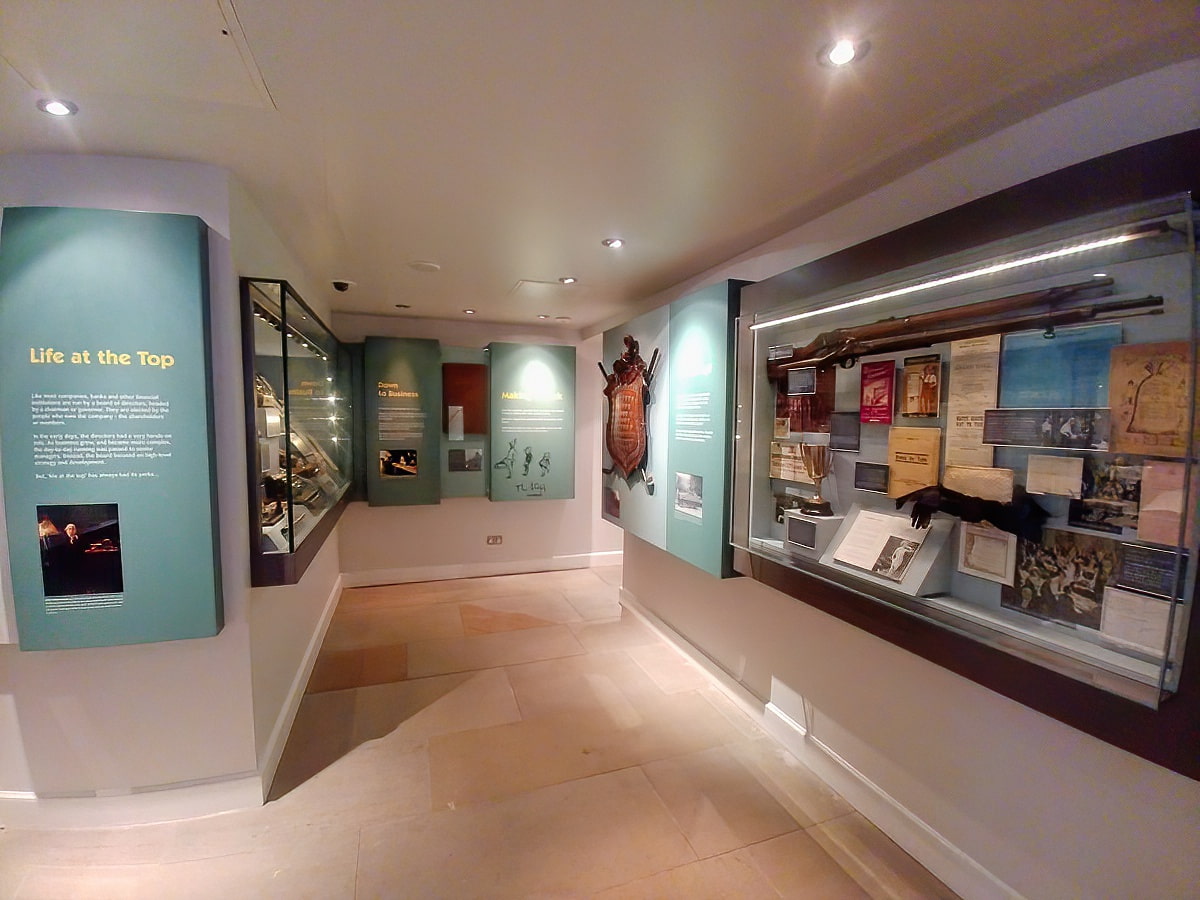
Museum on the Mound: Museum on the Mound
If you’re searching for a unique experience in the heart of Edinburgh, look no further than the Museum on the Mound, a one-of-a-kind attraction dedicated to the endlessly fascinating subject of money.
Located within the historic headquarters of the Bank of Scotland (you’ll find it between the Royal Mile and Waverley train station), the Museum on the Mound sits on an artificial hill created from earth excavated during the construction of Edinburgh’s New Town in the 18th century.
Not only is the museum free to visit but it boasts an impressive array of displays and interactive exhibits that will appeal to both children and adults alike.
From the first room where you can marvel at a million pound’s worth of banknotes to the displays of old coins, historic bank safes, and the earliest mortgage documents, the Museum on the Mound offers a captivating journey through the history of money from ancient times to the present day.
During a visit you can explore interactive maps detailing the evolution of Edinburgh’s cityscape from the 1600s to the present day and discover the ancient forms of currency our ancestors once used such as tea, shells, and even feathers.
With its engaging exhibits, knowledgeable staff, and child-friendly activities, the Museum on the Mound is the perfect destination for anyone looking to delve into the history and mystery of money in Scotland.
Scotch Whisky Experience
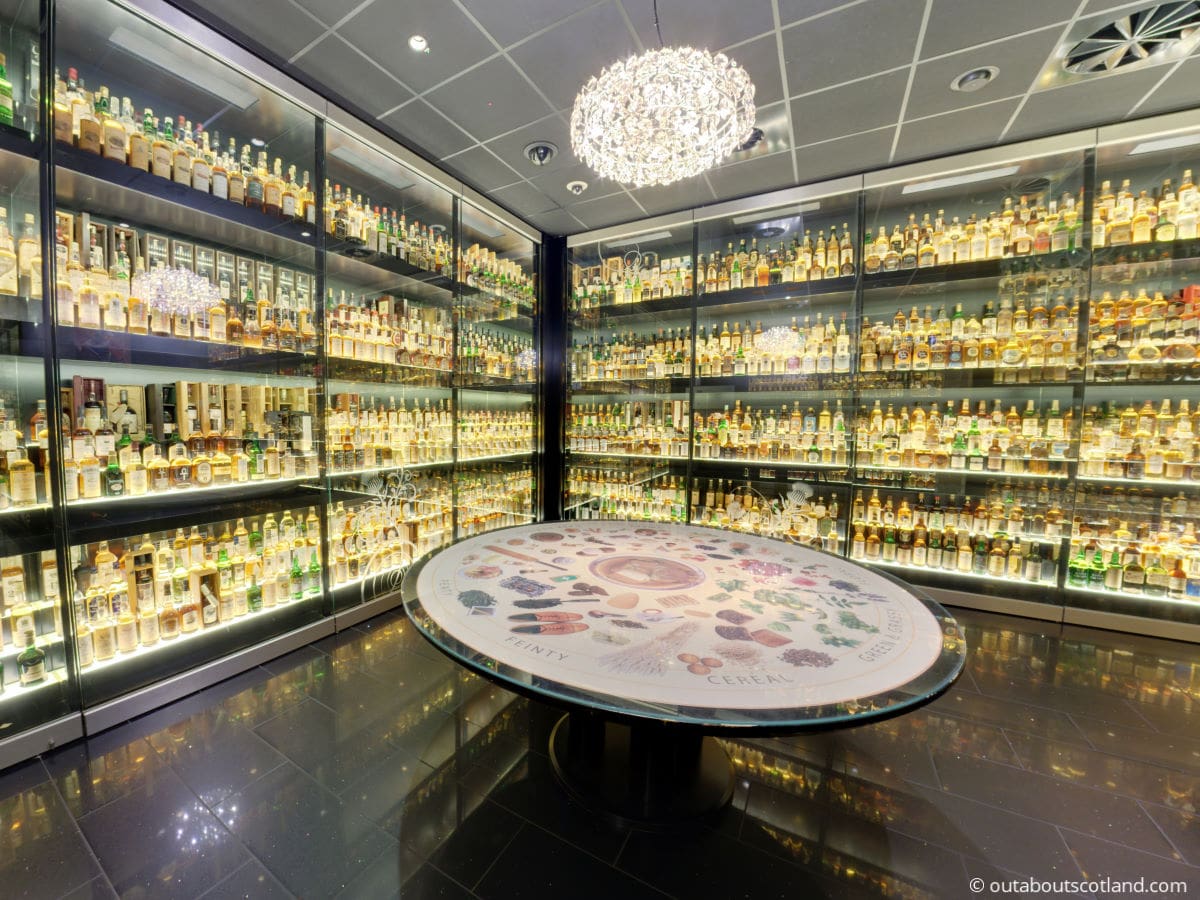
Scotch Whisky Experience: The Scotch Whisky Experience
Embark on a journey through Scotland’s whisky heritage at The Scotch Whisky Experience, located on the Royal Mile just a stone’s throw from Edinburgh Castle. You will learn about the history of this well-liked spirit while taking a tour with one of the attraction’s resident ghosts and sampling a variety of Scotland’s most well-known export.
Whether you’re a whisky aficionado or a newcomer to the scene, the Scotch Whisky Experience offers tours and tastings to suit all palates.
Visitors can take a Silver Tour for a quick introduction to whisky-making or indulge in a three-hour ‘Taste of Scotland’ extravaganza complete with a traditional Scottish meal in the on-site restaurant. As the restaurant has last orders as late as 9 pm, a tasting tour is, in my opinion, an absolute must-do for tourists.
During a visit you’ll experience the full story of the whisky-making process on a carriage ride through a replica distillery, after which you’ll be shown around the world’s largest collection of Scotch whisky, comprising an incredible 3,384 bottles.
The highlight, however, is sampling single-malt Scotch from various regions of the country and listening to one of the attraction’s in-house whisky experts discuss each sample in detail. After the tour, visitors can relax in the tasting bar, which has fabulous views overlooking the Royal Mile, followed by choosing a bottle from one of the best-stocked whisky shops in the city.
Coupled with the fact that you get to take home a complimentary tasting glass and a sample of Scotch, a visit to The Scotch Whisky Experience is an experience not to be missed by any whisky enthusiast.
Scott Monument
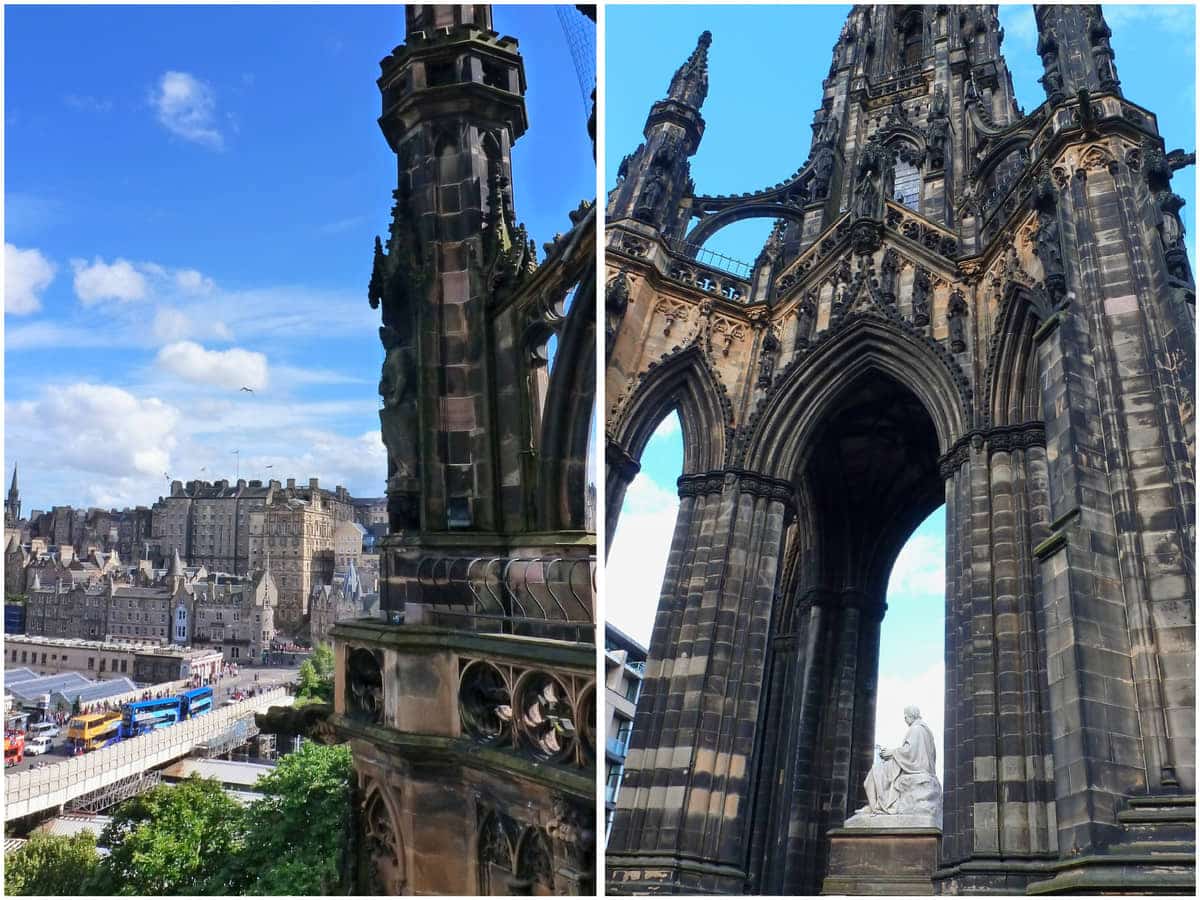
The Scott Monument: The Scott Monument
Rising majestically in the heart of Princes Street Gardens, a stone’s throw from Waverley Station, stands the Scott Monument – a colossal 200-foot tribute to the celebrated Edinburgh author, Sir Walter Scott. A true architectural wonder, this Gothic-inspired edifice is the largest monument to a writer in the world and has been an integral part of the cityscape since its unveiling in 1844.
Built from locally sourced sandstone, the Scott Monument is a tribute not only to Scott’s legacy but also to the skill and craftsmanship of Scottish stone masons. The design, influenced by the intricate carvings of Rosslyn Chapel and Melrose Abbey, is a testament to the attention to detail crafted into every inch of the monument.
The interior of the structure is accessible via a winding staircase that leads onto a series of viewing platforms and the highest platform – reached after climbing 288 steps – offers one of the best views in the city.
A visit to the Scott Monument is a must for anyone visiting Edinburgh whether they’re familiar with Sir Walter Scott’s work or are just looking for something to do in Princes Street Gardens. The only downside is that the stairs can get quite cramped, especially during the peak summer season, so be prepared for a bit of a squeeze as you make your way to the top.
Scottish National Gallery
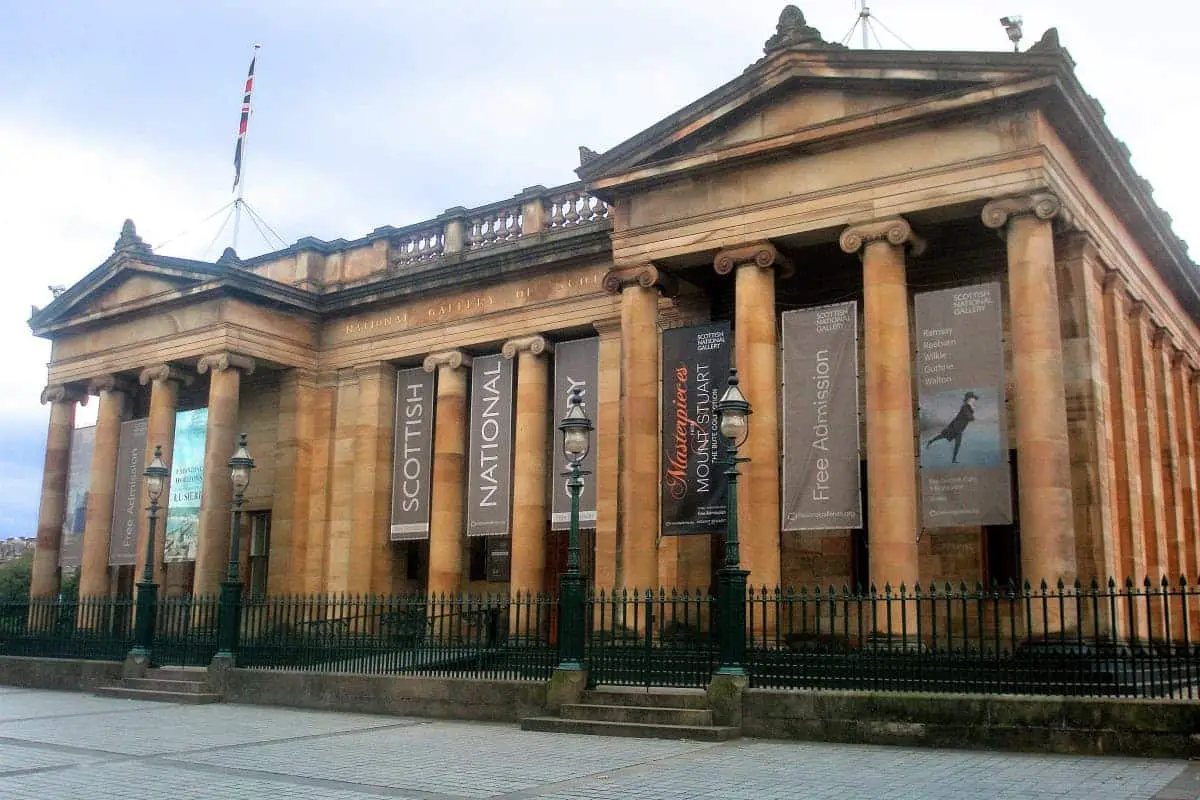
Scottish National Gallery: The Scottish National Gallery
The Scottish National Gallery is an architectural masterpiece situated right in the heart of Edinburgh’s city centre.
Nestled in the middle of the bustling Princes Street Gardens, the gallery boasts one of Europe’s finest collections of artworks collected from around the globe, with a special emphasis on Scotland’s own masterpieces. Inside, visitors can marvel at works by the likes of Rembrandt, Vermeer, Constable, Turner, Monet, and Van Gogh, as well as an array of Scottish artists, including Ramsay, Raeburn, Wilkie, and McTaggart.
The gallery is one of my top recommendations for things to do in Edinburgh for several reasons. Not only is it completely free to enter, but its central location means it’s easy to walk to, and it’s also a great place to escape crowds of tourists as families with young children tend to avoid it.
Construction began in 1850 with a foundation stone laid by Prince Albert, after which it housed the national collection of artworks until renovations were completed in 1912, when it re-opened with a focus on both Scottish and European art.
In 1970, additional storage space was added with the construction of the underground galleries, and this subterranean area is now a very popular area that houses a restaurant, a café with terrace seating, and a gift shop that sells reproductions of some of the artworks in the main gallery.
With so much to see, visitors can easily lose themselves for an entire morning in the Scottish National Gallery before moving on to the nearby National Portrait Gallery and the National Gallery of Modern Art, both of which are also free to enter.
Camera Obscura
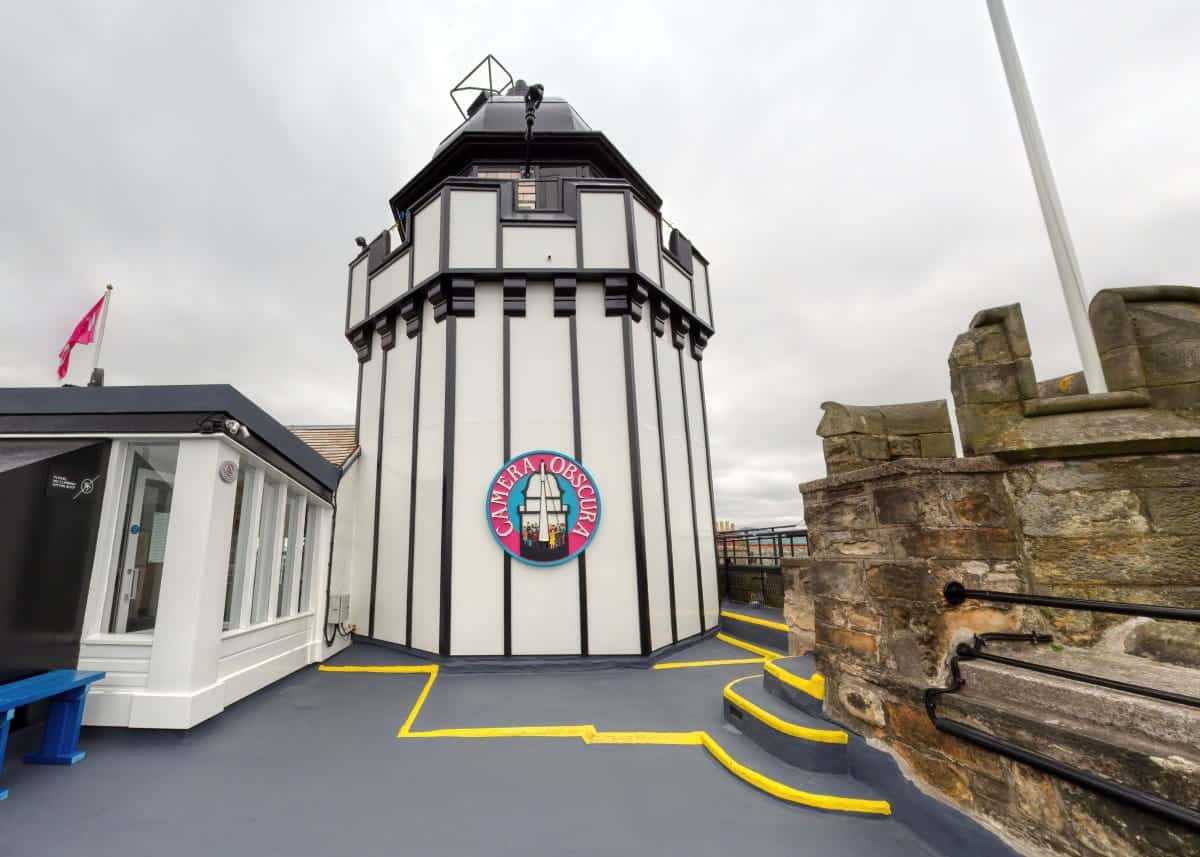
Official website: Camera Obscura & World of Illusions
Easily recognisable by its iconic whitewashed tower, Camera Obscura and World of Illusions is both a proud relic of Edinburgh’s past and a fascinating attraction for the present day. Its origins date back to the early 19th century, when an Edinburgh telescope maker gifted his collection to his daughter, who in turn created an exhibit that included the titular Camera Obscura, a device that uses reflected light to project an image of the city onto a whiteboard.
That might not sound particularly impressive, but back in the 1800s it wowed crowds who arrived in their droves to see what was, in effect, a photograph – years before the first actual photographic devices were ever conceived. Today, this much-loved tourist attraction promises to warp your perceptions and leave you spellbound, just as it did for Edinburgh’s 19th-century residents.
Across six floors of exhibits and displays, visitors are transported to a realm of illusions and deceptions. From holograms to mirror mazes and thermal imaging cameras to laser-etched displays, each level promises to stimulate your senses in a new and unexpected way.
But this attraction isn’t just a showcase of illusions. The third floor, for instance, allows you to remotely control cameras for a real-time bird’s-eye view of the city, while a collection of vintage photographs on another level offers a glimpse into the Edinburgh of yesteryear.
Princes Street Gardens
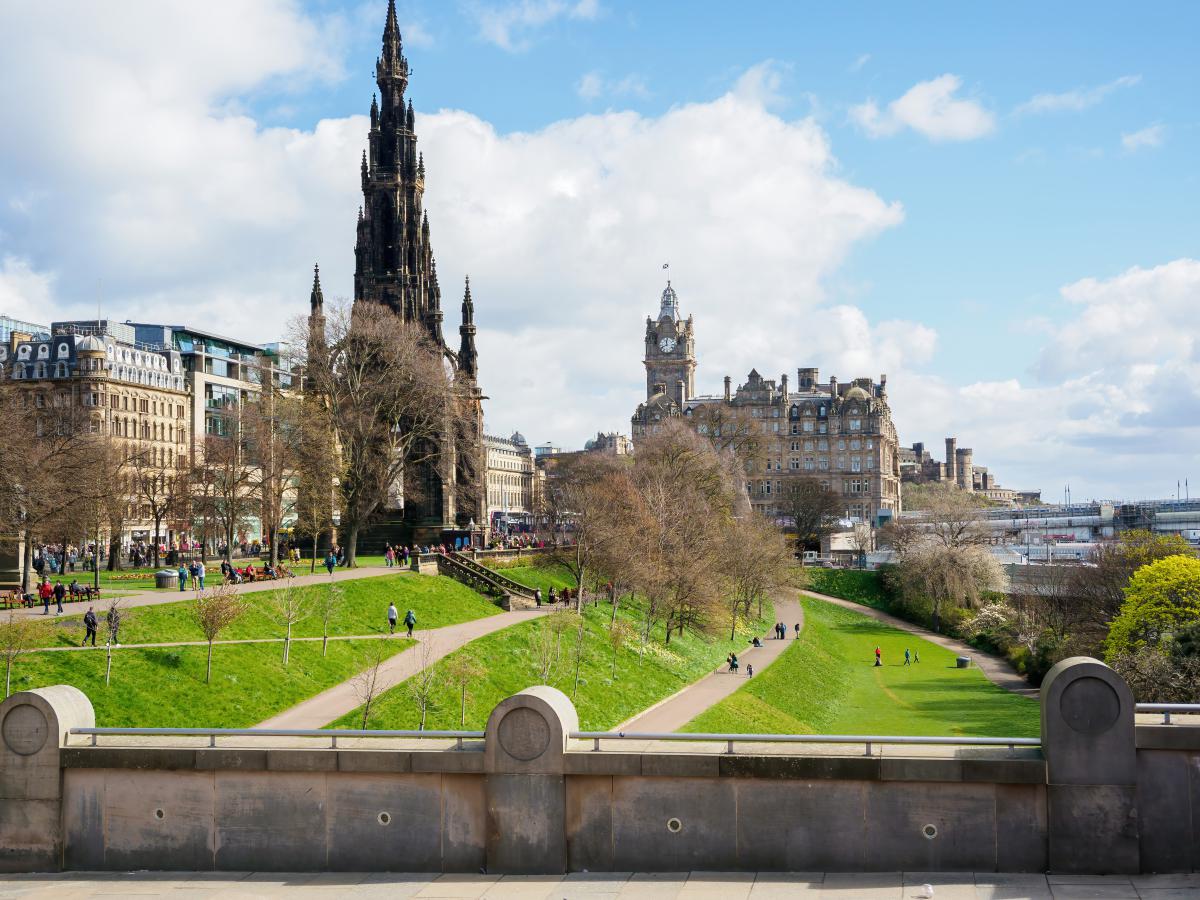
Out About Scotland Guide: Princes Street Gardens
Adjacent to the eponymous Princes Street and sandwiched between Waverley train station and Lothian Road, Princes Street Gardens are easy to visit in a single day along with the Scottish National Gallery and the Museum on the Mound.
The gardens are divided into two sections, with the western side being twice the size of its eastern counterpart. In addition to its size, Princes Street Gardens’ central location makes it a top destination to relax for both locals and tourists alike.
The east garden boasts the grandiose Gothic spires of The Scott Monument while the twin buildings of the Scottish National Gallery and The Royal Scottish Academy are just a couple of minute’s walk away. The west gardens offer their own array of sights, including the Ross Fountain and the Ross Bandstand, various war memorials, and the historic Parish Church of St. Cuthbert, all set against the imposing backdrop of Castle Rock and Edinburgh Castle.
The gardens have a long history dating back to the 1820s when the Nor Loch – a body of water below Edinburgh Castle – was drained as part of the city’s expansion plans. The drained loch was initially turned into a private garden in 1821 and later, in 1876, became a public garden under the city council’s permanent ownership.
Today, in addition to being used as a recreation area, the gardens serve as a music venue and are also home to the ever-popular ‘Edinburgh’s Christmas‘ event, which is fast becoming one of the largest Christmas festivals in the UK.
Getting Around Edinburgh
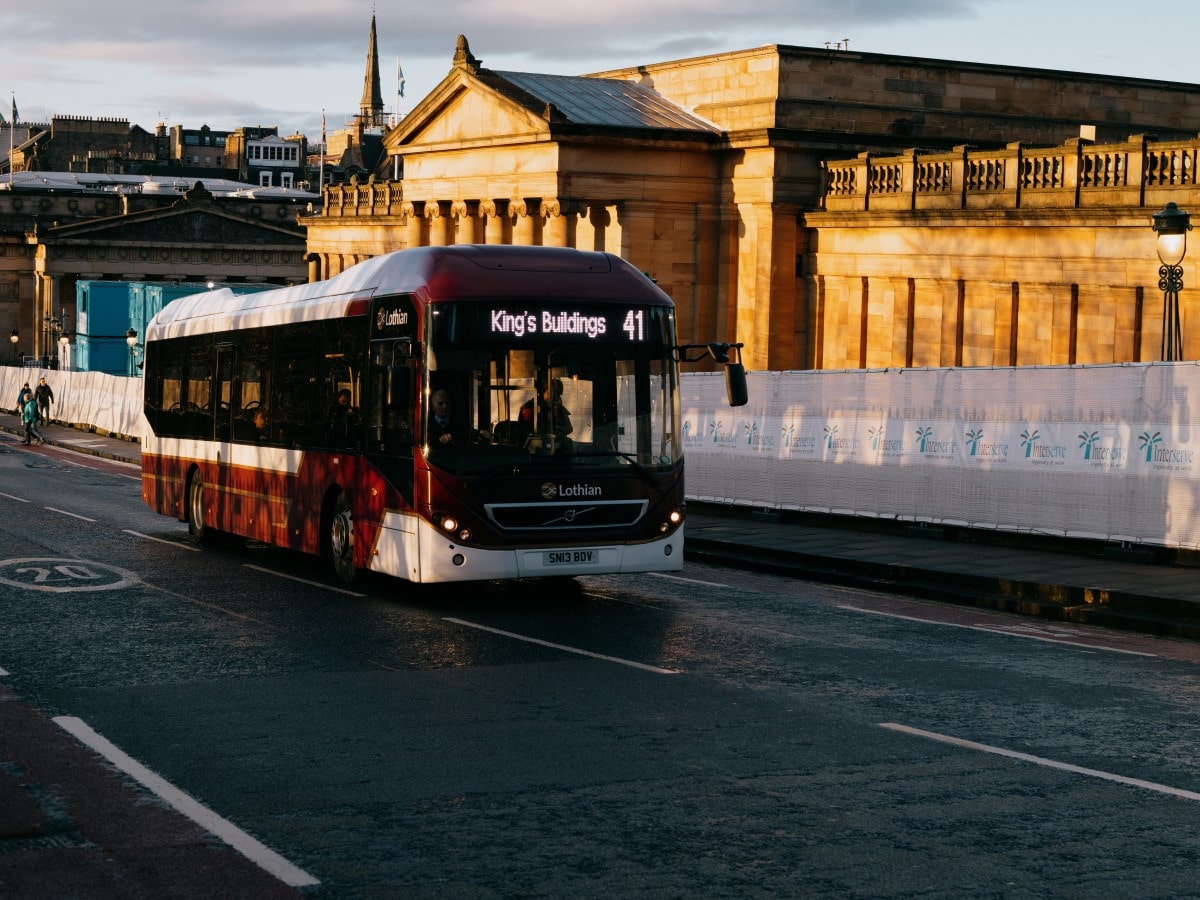
Edinburgh has a world-leading bus and tram network thanks to the services provided by Lothian Buses which provides cheap public transport on clean, well-maintained vehicles. The bus network runs through Edinburgh and out to the surrounding areas, while the trams provide a fast mode of transport over 8.5 miles from the airport into the city centre.
Visit Transport For Edinburgh for more information on Edinburgh’s trams and buses, or download the Transport for Edinburgh App to help you find your way around the network with real-time bus tracking.
Edinburgh is a compact city so there’s no need to hire a car if you’re only planning to stay in the city centre. However, for those wanting to travel further afield an extensive road network links the city to the rest of Scotland, making access to the capital easy by car.
Driving west, Edinburgh to Glasgow takes just over one hour on the M8, and driving north will take around 2.5 hours to reach Aberdeen and 3.5 hours to reach Inverness. Newcastle is approximately 2.5 hours by car, and Manchester and Birmingham take around 4 and 6 hours, respectively.
Frequently Asked Questions
What is not to miss in Edinburgh?
There are many things to see and do in Edinburgh, but some popular attractions that are not to be missed include:
1: Edinburgh Castle.
2: The Royal Mile.
3: The Palace of Holyroodhouse.
4: St. Giles’ Cathedral.
5: Holyrood Park and Arthur’s Seat.
How to spend a day in Edinburgh?
There are many things to see and do in Edinburgh. Here are a few suggestions for how to spend a day in the city:
1: Start the day with a visit to Edinburgh Castle.
2: Have lunch at one of the many restaurants in the city.
3: Take a walk down the Royal Mile.
4: Visit St Giles’ Cathedral.
5: See the Palace of Holyroodhouse.
6: In the early evening, take a walk in Holyrood Park.
7: Have dinner at one of Edinburgh’s many restaurants.
8: End the day with a show at the Edinburgh Playhouse theatre.
Is 2 days enough in Edinburgh?
The amount of time required to visit Edinburgh depends on how much of the city you want to see. Edinburgh is compact and easily walked around, and the majority of the main attractions are all located within two miles of each other.
Two days will be enough time to see the biggest tourist attractions in the city centre such as Edinburgh Castle and Holyrood Palace. However, visiting all of the top attractions at a leisurely pace could take up to five days.
What is the most visited place in Edinburgh?
The most visited place in Edinburgh is without a doubt, Edinburgh Castle. The historic fortress dominates the city skyline from its position on top of Castle Rock, an extinct volcanic plug situated at the foot of Princes Street Gardens.
Edinburgh Castle has a long and complex history and has served as a royal residence, a military stronghold, and a prison. Today, it is one of Scotland’s most popular tourist attractions which sees more than 2 million visitors each year.
What are the top attractions to visit in Edinburgh?
The top attractions to visit in Edinburgh are:
Edinburgh Castle, The Royal Mile, St Giles’ Cathedral, Holyrood Palace, The Royal Botanic Garden Edinburgh, The National Museum of Scotland, Camera Obscura and World of Illusions, Arthur’s Seat, and Calton Hill.



